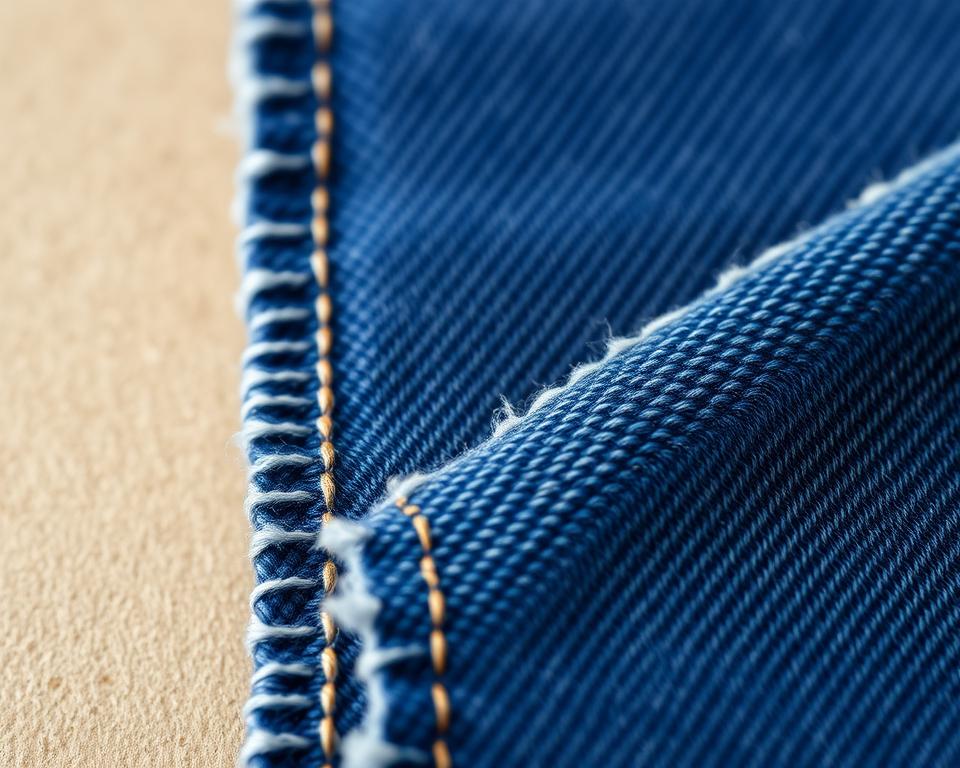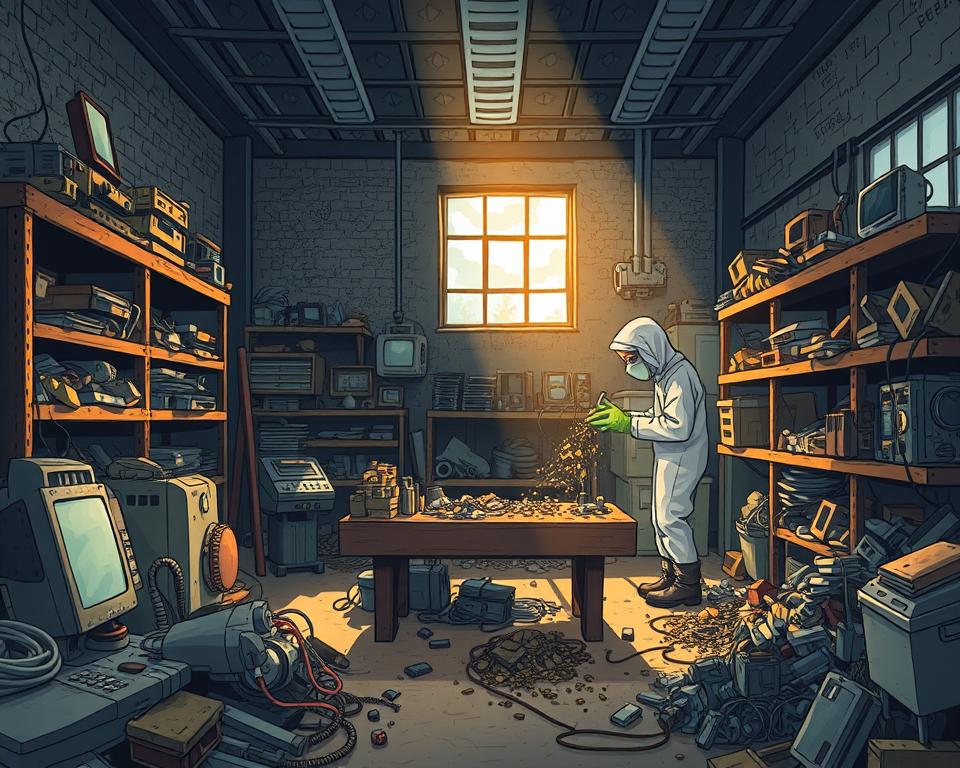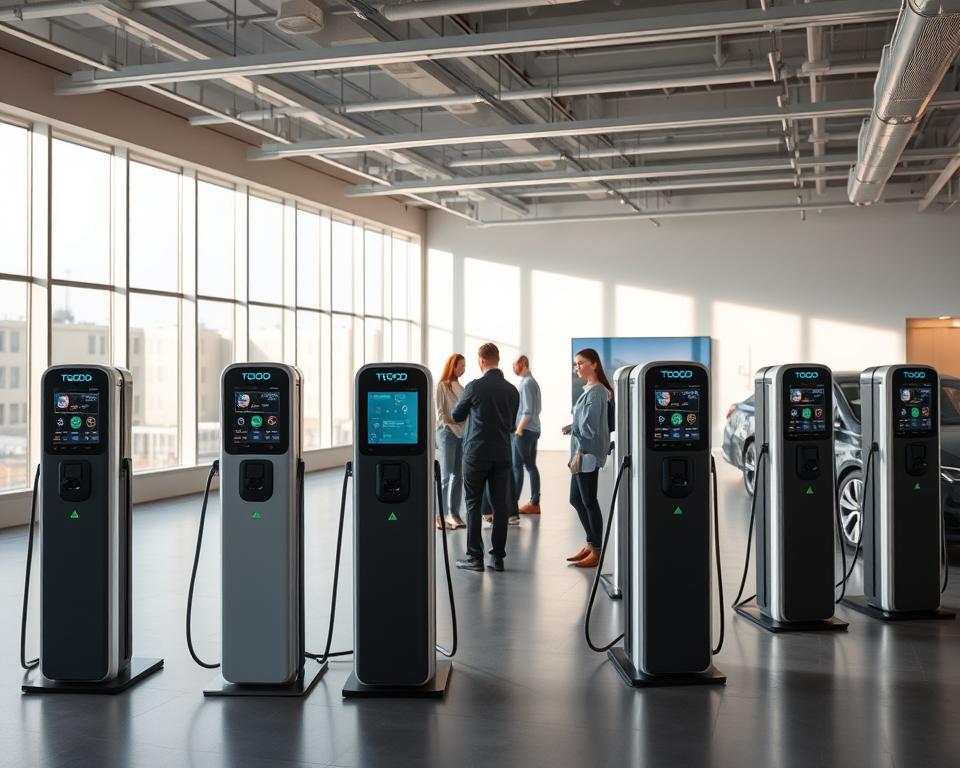The Next Era of Information Transmission: Fiber Optic Networking Innovations
Were you aware a single hair-thin strand can now carry over 100 terabits of data per second? That capacity could handle streaming 12 million HD films at once—a leap from the 1950s, when researchers began using light for rudimentary signaling.
- Data speeds a hundredfold greater than legacy copper cables
- Zero interference from power lines or radio signals
- Capacity to support 5G networks and 8K streaming
| Characteristic | Copper Cables | Fiber Optic Cables |
|---|---|---|
| Data Rate | 10 Gbps max | 100+ Tbps |
| Range | Approximately 100 m | Over 70 km |
| Security | Easily tapped | Extremely hard to intercept |
Optical signals reflect within glass cores via total internal reflection, like a laser ricocheting through a mirrored tunnel. This optical principle avoids data loss across vast spans. As video calls and smart devices multiply, these cables keep networks from collapsing under data weight – SZ stranding line.
Evolution of Fiber Optic Communication Technology
Years of research turned the concept of optical data transmission into a working technology. Researchers in the 1950s discovered that glass strands could guide light—an idea that revolutionized today’s communications.

Pioneers and Initial Trials
In 1952, Narinder Singh Kapany demonstrated that light could propagate through curved glass fibers. His work coined the term “fiber optics” and laid the foundation for today’s networks. Together with Harold Hopkins, he created pliable imaging bundles, which became prototypes for data-carrying fibers.
By the 1960s, laboratory trials showed these fibers had real-world applications. Although initial implementations suffered loss, ongoing experiments improved their efficiency. Researchers found that ultra-purified glass cores extend signal reach with minimal distortion.
Key Fiber Optic Breakthroughs
In the 1970s, the first commercial deployments revolutionized the industry. Carriers switched from copper to fiber, enhancing call quality and bandwidth. In 1970, Corning Glass Works introduced low-attenuation fiber capable of 65 km spans.
| Date | Milestone | Significance |
|---|---|---|
| 1977 | First live phone traffic | Proved real-world reliability |
| 1988 | Transatlantic cable TAT-8 | Linked Europe and North America |
| 1990s | Erbium-doped amplifiers | Allowed extensive long-haul connections |
Today’s innovations prioritize higher throughput and expandability. DWDM technology multiplexes many channels on one fiber concurrently. Such progress connects laboratory research to worldwide network infrastructures.
Fundamentals of Fiber Optic Communication Technology
Given light’s unmatched speed, it’s a perfect medium for data transmission. This straightforward concept underpins contemporary networks. Rather than electrons in metal cables, photons traverse geographic barriers. Below is the fundamental mechanism.
Photons vs. Electrons: Why Light Wins
Light pulses carry information more efficiently than electricity. Light particles:
- Move at 186,000 miles per second (99.7% light speed)
- Don’t create heat or electromagnetic interference
- Can carry multiple signals at once using different wavelengths
| Factor | Electrons (Copper) | Photons (Glass) |
|---|---|---|
| Speed | Up to 10 Gbps | Over 100 Tbps |
| Interference | Vulnerable to electrical noise | Immune |
| Energy Use | Greater energy demand | Low |
Total Internal Reflection in Fiber Cores
Light stays trapped in the core—the central glass strand—thanks to total internal reflection. Because the core’s refractive index exceeds that of the cladding. Upon striking the boundary at a critical angle, it reflects internally, traveling long distances.
Such a design minimizes attenuation. Over extensive spans, nearly 95% of photons arrive intact. Combined with laser precision, it ensures your video calls stay crisp and your downloads finish fast.
Various Fiber Cable Categories
Fibers come in diverse designs. Choosing depends on required reach and bandwidth demands. Below are the two primary classifications and their distinct features.
| Attribute | SMF | Multi-Mode |
|---|---|---|
| Core Size | 9 µm | 50–62.5 µm |
| Bandwidth | >100 GHz | 35–500 MHz |
| Maximum Span | 120 miles | 1,600 feet |
| Typical Applications | Long-haul telephony | Local area networks |
Medical centers deploy single-mode links to move MRI scans across campuses. Schools often pick multi-mode for classroom networks—it handles video streams without breaking budgets. Each cable category maintains connectivity, tailored to specific needs.
Fiber Optic Cable Construction and Key Components
Ever wondered what keeps your internet running smoothly during a storm The answer lies in the smart design of modern cables. Multilayer structures shield information as it moves at near-light velocity.
Core, Cladding, and Coating Layers
At the heart of every cable sits the glass core—thinner than a human hair. This ultra-pure strand carries light signals using total internal reflection. Surrounding it, the cladding layer acts like a mirror, bouncing stray photons back into the core.
An acrylate polymer coating encases the cladding and core. This 250-micron shield prevents scratches and moisture damage. Together, these components form the light-carrying highway inside every optical fiber.
Armoring and Outer Protection
Real-world durability comes from Kevlar® strands around the coated core. Aramid strands handle pulling forces to avoid fiber breakage. An outer polyethylene jacket completes the package, resisting weather, chemicals, and curious rodents.
| Component | Substance | Role |
|---|---|---|
| Core | Pure silica glass | Light transmission |
| Cladding | Doped silica | Signal containment |
| Coating | Acrylate polymer | Physical protection |
| Jacket | Polyethylene | Environmental shield |
Jacket colors indicate type: orange for multi-mode, yellow for single-mode. Technicians rely on these hues to differentiate fibers for setup or troubleshooting.
How Fiber Carriers Transmit Data
What enables near-light-speed data transfer with minimal loss? The answer lies in converting electrical signals into precise flashes of light. Flashes map bits (1s) and dark intervals (0s), forming an optical binary stream deciphered by lasers.
Optical Signaling Mechanics
Lasers emit ~500 million pulses/sec through fiber cores. Advanced Fibers in metal tube techniques like QAM-16 pack 4 bits into each flash, quadrupling capacity. This photon dance happens with near-zero electromagnetic interference, unlike older copper-based systems.
Managing Dispersion & Attenuation
Two primary issues compromise signal integrity:
- Chromatic dispersion: Various wavelengths travel at dissimilar velocities.
- Mode dispersion: Light paths scatter in multi-core cables.
Today’s fibers address these with these solutions:
| Remedy | Outcome | Gain |
|---|---|---|
| Doped glass cores | Equalizes propagation speeds | 40% less signal spread |
| DSP units | Real-time error correction | >99.999% fidelity |
Signal loss drops to 0.15 dB/km in premium cables—a 92% reduction from early designs. Paired with EMI-resistant layers, they preserve signal fidelity worldwide. Consequently, transoceanic calls remain sharp despite severe weather.
Sophisticated Fiber Networking Techniques
How do video streams remain stable amid storms? The answer lies in specialized connectors and precision installation methods that form the backbone of modern networks. Such gear guarantees uninterrupted data transfer regionally and globally.
Fiber Termination & Splicing Methods
Network reliability starts with proper connections. SC connectors offer tool-less insertion; LC connectors compress for high-density environments. MPO/MTP designs handle multiple strands at once—perfect for data centers moving massive files.
Splicing primarily uses two approaches:
- Fusion splicing: Joins fiber ends by fusing, achieving minimal insertion loss.
- Mechanical splicing: Aligns fibers with precision sleeves for quick repairs.
| Connector | Best For | Insertion Loss |
|---|---|---|
| SC | Enterprise networks | 0.25 dB |
| LC | High-density devices | ~0.20 dB |
| MPO | Data center interconnects | ~0.35 dB |
Contemporary Network Architectures
Today’s architectures demand flexible installations. Micro-duct systems permit cable blowing; armored jackets resist severe environments. Municipal implementations route fiber to traffic systems and surveillance, enabling intelligent networks.
Telecom operators roll out hybrid assemblies, merging electrical and optical conductors. Such designs feed 5G small cells and IoT sensors alike, showcasing agile network evolution.
Bandwidth and Throughput Advantages
Imagine data as water in pipes: larger pipes yield greater flow. This bandwidth concept explains why modern networks need glass-based systems. Where copper struggles like a garden hose, advanced cables act as firehoses, handling thousands of HD streams simultaneously.
- Photons moving at ~186,000 mi/s
- Multiple data streams via wavelength multiplexing
- Error correction reducing resend requests by 80%
| Decade | Max Speed | Price per Gigabyte |
|---|---|---|
| 1980s | 45 Mbps | Approximately \$1,200 |
| 2000s | 10 Gbps | ~\$0.12 |
| 2020s | 178 Tbps | ~\$0.0004 |
Throughput dictates online performance. Videoconferencing needs 5 Mbps per user, while VR demands 50 Mbps. As NEC’s 2023 report shows, networks using glass cables support 40x more users than copper alternatives at half the energy cost.
“Every dollar invested in high-capacity networks yields $3.80 in economic growth through improved productivity.”| “Each \$1 poured into high-bandwidth infrastructure returns \$3.80 in productivity gains.”
Performance improvements also slash operational costs. Fiber extends ~60 mi between regenerators, unlike copper’s ~3,000 ft spans. Such efficiency powers 8K UHD, live AI tasks, and uninterrupted cloud sync at modest subscription fees.
Mitigating Noise & Attenuation
Have you experienced static-laden calls in storms? Traditional copper lines struggle with such interference. But glass-based systems laugh it off. By leveraging photons rather than electrons, they eliminate interference from electricity or RF sources.
Inherent EMI Immunity
Unlike metal wires that act like antennas, glass strands don’t conduct electricity. This means they ignore disruptive signals that plague copper networks. A 2023 study found 92% fewer data errors in industrial settings when using light-based systems compared to older methods – Fiber draw tower.
Engineers combat signal loss through three key strategies:
- High-purity cores minimize photon scattering
- Accurate laser coupling decreases insertion loss
- Protective coatings prevent moisture damage
| Factor | Copper | Fiber |
|---|---|---|
| Noise Susceptibility | Significant | Negligible |
| Attenuation per Mile | 3 dB | 0.2 dB |
| Maintenance Needs | ~Monthly upkeep | Annual inspections |
“Our factory’s error rates dropped 80% after switching to light-based networks—no more machine downtime from radio interference.”| “After switching to fiber, error rates fell by 80%, eliminating downtime from RF noise.”
These cables thrive where others fail. Undersea lines resist seawater attack; desert runs survive sandstorms. With 99.995% uptime ratings, they’ve become the backbone of mission-critical systems worldwide.
Fiber’s Role in Telecom & Internet Services
How does your Netflix show arrive instantly from across the globe Fiber networks serve as the neural pathways of today’s Internet. These systems power everything from streaming services to stock market trades, using light to bridge continents.
Role in Long-Haul and Metro Networks
Transcontinental cables stretch over 750,000 miles under oceans, carrying 99% of global internet traffic. In cities, metro networks link cell towers and offices using hair-thin strands. Optical transmitters modulate light; receivers demodulate at endpoints.
| Feature | Copper Infrastructure | Glass-Based Networks |
|---|---|---|
| Throughput | 1 Gbps | 100 Tbps |
| Lag | ~5 ms per km | 0.005 ms/km |
| Uptime | 99.9% | ~99.995% |
Application in Data Centers and Cable TV
Data centers rely on these cables for inter-rack communication, moving petabytes daily. Cable networks use hybrid optical/coax infrastructure to stream 4K. Verizon’s 2023 upgrade cut buffering complaints by 73% in urban areas.
Three economic benefits drive adoption:
- Maintenance costs ~60% lower than copper systems
- Easily scalable for 5G traffic
- 40% energy savings per data unit
From Manhattan’s financial district to Pacific submarine routes, these communication systems prove that speed and reliability can coexist. In the words of an engineer: “Nothing outpaces light when transferring vast datasets.”
Next-Generation Fiber Innovations
Imagine networks accommodating 8 billion simultaneous video streams. Upcoming breakthroughs promise to redefine data mobility. Advanced transceivers and modulation schemes drive network evolution.
Next-Gen Transmitters & Detectors
Modern lasers now fire 200 wavelengths simultaneously—up from just 40 a decade ago. They deliver ~5× the output at ~30% reduced consumption. Combined with graphene-based photoreceivers, they detect even minimal photon levels.
Key breakthroughs include:
- Narrow-linewidth lasers reducing noise by 90%
- Photonics-integrated circuits shrinking hardware size
- AI-driven calibration maintaining peak performance
Coherent Transmission and Multiplexing Techniques
Coherent optics modulate both phase and amplitude to encode information. This trick boosts capacity 16-fold compared to older on-off signaling. When combined with wavelength-division multiplexing (WDM), single strands carry 800+ data streams.
| Method | Channels | Capacity |
|---|---|---|
| DWDM | 160 | 80 Tbps |
| OFDM | ~512 | 120 Tbps |
| SDM | Multi-core fibers | ~1 Pbps* |
*Experimental (NTT, 2023)
Such approaches mesh with current networks with minimal overhaul. Verizon’s 2024 upgrade used coherent tech to double network capacity without laying new cables. As one engineer noted: “We’re teaching old cables new tricks—the best is yet to come.”
Global Standards and Design Considerations
Ever wondered how your video call stays crystal clear across continents Global standards act as invisible rulebooks, ensuring every piece of the puzzle works perfectly together. Without these guidelines, networks would struggle with compatibility issues and performance gaps.
| Standard | Scope | Benefit |
|---|---|---|
| ITU G.652 | Single-mode fiber | Supports >100 Gbps links |
| IEC 60793-2-50 | Durability standards | Certifies two-decade service life |
| ITU G.654 | Subsea cables | Prevents saltwater corrosion |
Testing & Quality Benchmarks
Rigorous validation ensures reliable operations. Key benchmarks include signal loss (under 0.25 dB/km) and tensile strength (minimum 50 Newtons). Manufacturers run 200+ checks before shipping products, from temperature resistance to bend tolerance.
“Our compliance with IEC 61300-3-35 reduced installation errors by 65% last year.”| “Adhering to IEC 61300-3-35 led to a 65% drop in deployment mistakes.”
Certified parts and precise specs avert expensive rework. Installers use standardized color codes and termination methods, creating seamless connections between equipment from different vendors. This harmony keeps global data flowing without hiccups.
Real-World Fiber Deployment Examples
How do cities handle millions of simultaneous video streams without crashing Actual projects illustrate how strategic design and robust fibers sustain our digital ecosystem. Let’s explore two groundbreaking projects that reshaped global connectivity.
Urban Deployments and Metro Networks
NYC’s Metro Fiber initiative addressed slow copper infrastructure, which hindered business connectivity by ~40%. Engineers installed 800 miles of micro-trenched cables under sidewalks, avoiding subway tunnels and gas lines. Outcomes: Latency fell from ~14 ms to ~2 ms; throughput increased by ~600%.
| Challenge | Solution | Result |
|---|---|---|
| Subsoil crowding | 3D GIS route planning | 92% faster installation |
| EMI challenges | Armored MC fiber | 99.99% uptime |
| Funding limits | Public-private partnerships | ~30% fewer expenses |
Subsea and Transcontinental Examples
The MAREA cable—stretching 4,000 miles between Virginia and Spain—handles 160 Tbps across eight fiber pairs. Teams contended with ~10,000 ft depths and marine hazards, deploying ROVs to trench cables into ocean floor. Costing \$160M, it transmits ~55% of transatlantic data.
“Subsea systems require 200+ design revisions before deployment. Every meter matters when you’re laying cable across tectonic plates.”| “Over 200 design iterations are typical for undersea cables. Small changes hugely impact viability across plates.”
Key differences between deployment types:
- City installations prefer bend-insensitive fiber for tight paths
- Subsea systems require titanium-reinforced sheathing
- Isolated sites rely on solar-driven amplifier stations
Both approaches prove that strategic design and durable materials can transform how we move data. Spanning city high-rises to sea depths, fiber underpins today’s digital existence.
Economic Impact and Scalability of Fiber Networks
What powers the streaming revolution and remote work boom The answer lies in networks that combine upfront investment with long-term savings. Though \$60K/mi can be spent on installation, these fibers pay off over years of use.
Strategic Investment for Scalability
Upgrading to advanced networks cuts operational costs by 40% compared to copper systems. Fewer repairs are needed—no more corrosion issues or EMI troubleshooting. A 2024 study showed:
| Cost Factor | Legacy Systems | Fiber-Based |
|---|---|---|
| Deployment | ~\$45/m | ~\$28/m |
| Energy Use | ~5 W/device | 1.2W per device |
| Repairs | ~12 annually | 2/year |
Worldwide spending reflects this transition. Major carriers will invest ~\$150B by 2027 to grow fiber footprints. Locale upgrades hit ~300% ROI in 5 years via boosted efficiency and minimized outages.
Overcoming Rollout Challenges
Yet municipalities encounter three primary obstacles:
- Permitting delays adding 18 months to timelines
- Scarcity of skilled fiber technicians
- Community pushback against trenching
“Our Phoenix deployment took 22 months instead of 14 due to permit bottlenecks. Still, the network boosted local GDP by \$380 million annually.”| “Phoenix’s build required ~22 months, not 14, over permit delays—but delivered ~\$380M/year in GDP uplift.”
Innovative solutions are emerging. Micro-trenching reduces street disruption by 80%, while public-private partnerships share financial risks. Such strategies enable cost-effective, scalable fiber deployment.
Innovations and Future Prospects in Data Transmission
Fiber backbones are receiving performance upgrades. Scientists explore sub-micron fibers and advanced modulations beyond existing standards. These leaps promise to shrink global delays while handling tomorrow’s data avalanches.
Upcoming Fiber Innovations
MIT’s 2024 experiments suggest hollow-core fibers (air-filled) may cut latency ~30%. By routing photons through near-vacuum cores, they minimize refractive loss. Parallel multi-core fibers embed seven channels in one sheath, boosting throughput ~4×.
| Metric | Today’s Specs | 2027 Projection |
|---|---|---|
| Speed | 100 Tbps | ~1.2 Pbps |
| Reach | ~70 km | ~150 km |
| Power Demand | ~0.5 W/device | 0.15 W/device |
New multiplexing schemes squeeze 400 wavelengths into single strands—up from 160 today. This “spectral supercharging” lets networks handle 8K virtual reality streams without breaking stride.
Integration with 5G and Beyond
Future 6G deployments depend on high-capacity fiber rooftails for mmWave support. Trials in Dallas show hybrid systems delivering 10 Gbps wireless speeds when paired with high-capacity backbones.
- 5G small cells need fiber links every 500 feet
- Ground-satellite nodes depend on ultra-low-latency backbones
- Smart factories use real-time data flows for robotic precision
A 2023 Nokia study found networks using advanced modes reduced 5G latency by 82%. In one expert’s words: “Wireless depends on wired guts—the quicker the spine, the clearer the signals.”
The Bottom Line
The unseen fibers linking our digital lives continue evolving. Material science and engineering leaps have moved us from copper constraints to optical velocity. Today’s networks prove faster isn’t just better—it’s essential for streaming, surgeries, and stock markets alike.
Modern systems thrive through smart design. Plastic-based protective layers shield delicate glass cores, while global standards ensure seamless compatibility. Such features cut power consumption ~40% versus legacy tech, rendering ultrafast access eco-friendly and expandable.
Obstacles persist—deployment expenses and community engagement. Yet economic benefits outweigh hurdles—every $1 invested yields nearly $4 in growth. As 5G expands and AI demands real-time data, reliable infrastructure becomes non-negotiable.
Future endeavors will extend these frontiers. Hollow cores and advanced wavelength methods may render current rates outdated. Undoubtedly, information exchange will advance further, fueled by our relentless drive for faster, broader, and more intelligent connectivity.


